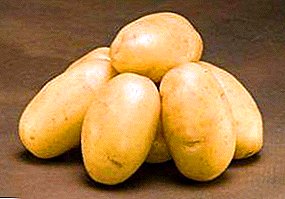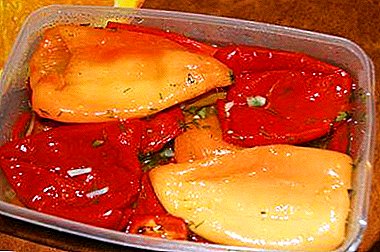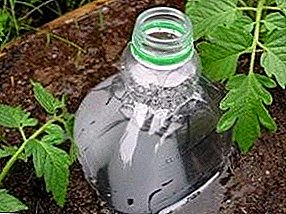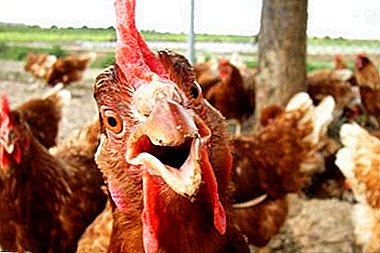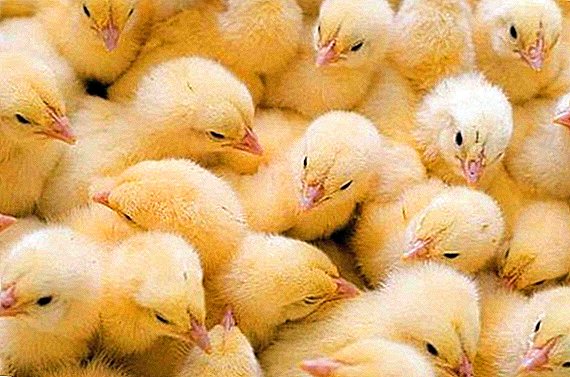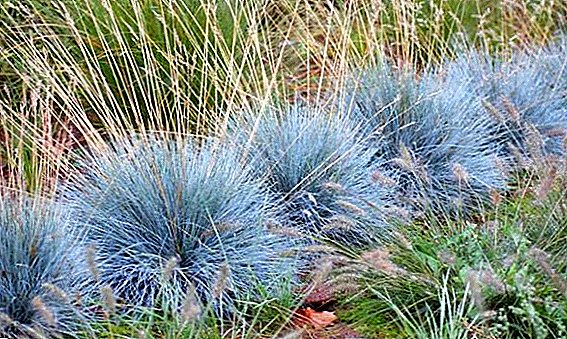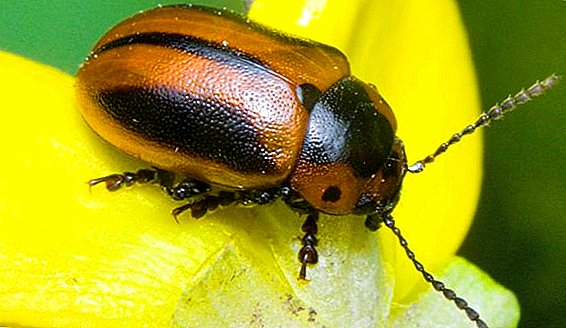 Rapeseed leaf beetle It is deservedly considered one of the most dangerous insectoids that cause significant damage to various cabbage crops. In this article you will find comprehensive information on how to recognize this pest and how to provide appropriate measures of resistance when these insects attack your beds.
Rapeseed leaf beetle It is deservedly considered one of the most dangerous insectoids that cause significant damage to various cabbage crops. In this article you will find comprehensive information on how to recognize this pest and how to provide appropriate measures of resistance when these insects attack your beds.
Pest description
This beetle has dimensions of the order of 7-10 mm, the body of its oblong-oval shape, the upper part of the body wears a red and black color, has three longitudinally located strips - one along the seam and two on both sides in the central part of the elytra.  The middle part of the body passes into the head, on which is located one pair of antennae of black color, numbering 11 segments. The legs are six, all in structure are like a mustache, only thicker and also composed of segments.
The middle part of the body passes into the head, on which is located one pair of antennae of black color, numbering 11 segments. The legs are six, all in structure are like a mustache, only thicker and also composed of segments.
The larva has a body length of 13-16 mm, the surface of the back has a brown-brown color, and the lower part is colored yellow. The entire larva is covered with dark bumps and wart-like formations, on top of which the bristles are placed. If you touch warts, a glue-like substance with a sticky odor is released. The pupa also has a black and red color, its size is about 1 cm.
Did you know? On cultivated plants, not only imagos of this species but also their larvae parasitize.
Spread and harm
After wintering in the form of eggs or larvae, which takes place in the upper layers of the soil, adult forms develop. In the south, it usually occurs in the middle of spring, and in the north a little later, in the first third of May.  At first they parasitize on cabbage weeds, but as the population grows, they move to cultivated plants such as canola, radishes, cabbage, etc. Beetle-beetle eating the flesh of the leaves, leaving only hard streaks, which, in turn, leads to the immediate death of plants.
At first they parasitize on cabbage weeds, but as the population grows, they move to cultivated plants such as canola, radishes, cabbage, etc. Beetle-beetle eating the flesh of the leaves, leaving only hard streaks, which, in turn, leads to the immediate death of plants.
After a period of development that lasts for 15-28 days, the larvae turn into cocoons, as a rule, lying in the ground at a depth of 5 to 8 cm. Then, 14-20 days later, the process of development of the final forms ends, and they come to the surface bugs that continue to feed on various cruciferous cultures.
Did you know? The leaf beetles family is one of the largest insect families known to mankind. It has up to 35,000 different species, which amount to 2500 genera.
With the onset of summer heat, imagoes burrow into the soil to a depth of 20 centimeters and remain in a state of summer rest until the onset of autumn. At the end of August or at the beginning of September, depending on the temperature regime, the bugs get out onto the surface and immediately mate.
Females lay eggs in the surface soil layers, while the fecundity of one individual can reach about 250 eggs. In one year, only one generation of this pest develops, but sometimes this is quite enough so that the crop suffers significant losses. 
There are many species of leaf beetles. Garden and garden crops are plagued by horseradish, strawberry, asparagus, peppermint, sorrel, willow, viburnum leaf beetles, fire beetle.
How to deal with rapeseed leaf beetle
Control measures applied against this pest include the use of agrochemicals and physical methods. More effective, no doubt, are the first. Remember also that by delaying the transition to the use of insecticides, you risk losing even more of your crop.
Without chemistry
This set of measures includes the following activities:
- Cultivation of soil in the autumn. It would be ideal to hold this event directly after laying beetle eggs by females, namely in the first third of September.
- Elimination of cabbage weeds on your plot. This will lead to the fact that the larvae hatched in the spring from the eggs will not find a nutrient medium for themselves and will leave from your vegetable garden.
- Periodic preventive soil loosening, including between the rows. Produced to destroy harmful pupae.
- Early cabbage planting.
- Catching adult beetles and larvae using a net. However, this measure will be effective only in areas of small size.
- If you want to protect from the influence of these pests any other crop other than rape, it is recommended to plant the latter close to plants that need protection. This beetle with a high degree of probability will prefer rape to any other culture.

Important! Do not waste time on these activities in the event that more than 10% of all plants are affected or if more than 5-6 individuals of the parasite are found on one plant. In this case, go straight to insecticide spraying.
Use of drugs
The chemical industry has developed many different insecticides to control insect pests, including the described beetle. However, it is worth remembering that each of the preparations has individual methods of preparation, concentration and consistency of the finished solution and methods of application.
Important! The best time of the day for treatment with insecticide solutions is considered to be evening time, since during this period the pest usually sits on top of the sheets.
Remember also that the majority of insecticides are dangerous to humans, so do not neglect the methods of personal protection. Phosbecid, Actellic and Zolone are considered the best anti-rape leaf beetles.
Kemifos and Detsis are effective against leaf beetles on various cultures.

Other rape pests
Canola is a plant susceptible to a huge number of pests and diseases. Here is a short list of them:
- Cruciform flea. In addition to rape, all cruciferous plants are also striking: cabbage, radish, mustard, etc.
- Cocktails rapeseed ordinary. In addition to all crucifers, it can also eat on a walker, radish, turnip.
- Skullcaper's rapeseed seed. It is interesting in that it feeds on young seeds from the inside, after eating which it gnaws a pod and moves to the upper layers of the soil.
- Cabbage mosquito pod. The main damage is caused by the larvae, whose vital processes interfere with the flowering of crops such as rapeseed, cabbage and turnip, to normally open.
- Rape sawfly. For the year, two generations of this pest develop. Deals damage to absolutely the entire ground part of the plant.
- Rapeseed flower eater. They feed on rapeseed. The greatest damage is caused by winter and spring rapeseed plantings in the process of destroying the buds.
 Careful implementation of all agrotechnical measures and timely treatment with insecticides will practically relieve you from any of the listed pests. We hope that this article will help to preserve your crop of rapeseed and other cruciferous from these annoying parasites.
Careful implementation of all agrotechnical measures and timely treatment with insecticides will practically relieve you from any of the listed pests. We hope that this article will help to preserve your crop of rapeseed and other cruciferous from these annoying parasites.

